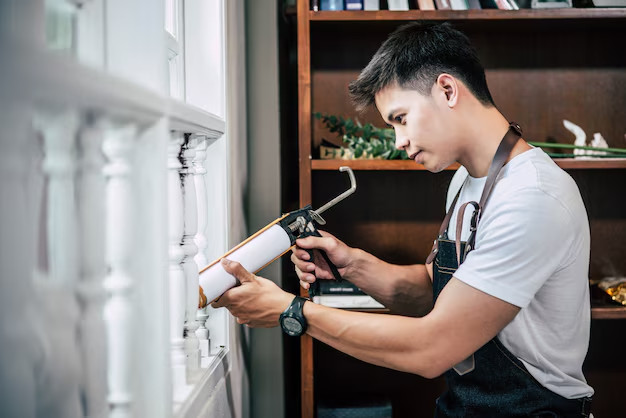Troubleshooting Your LG Refrigerator: A Complete Guide
Owning an LG refrigerator is generally a seamless experience, but like all appliances, they can occasionally present issues. Whether it's a cooling problem or an ice maker acting up, understanding how to troubleshoot can save you time and money. This comprehensive guide offers practical tips and solutions to common issues encountered with LG refrigerators, empowering you to address them with confidence.
🤔 What to Do When Your LG Refrigerator Isn't Cooling
One of the most distressing scenarios is discovering that your refrigerator isn’t cooling. While this seems daunting, there are logical steps you can take to troubleshoot.
Check the Power Source
Before diving into complicated fixes, ensure your refrigerator is actually plugged in. Mistakenly disconnected power cords or tripped circuit breakers are common reasons for coolers to lose power.
- Inspect the power cord: Make sure it's firmly plugged into the outlet.
- Check the circuit breaker: If the breaker has tripped, reset it.
Thermostat Settings
Sometimes, the solution is as simple as adjusting the temperature settings.
- Locate the control panel: Usually found inside the fridge.
- Adjust settings: Ensure the thermostat is set to a colder setting.
Air Circulation
Proper air circulation is crucial for maintaining the right temperature.
- Avoid overcrowding: Overpacking the fridge can obstruct air vents, restricting airflow.
- Check air vents: Clear off any blockages to help the fridge maintain a stable temperature.
Door Seals
Faulty door seals can leak cold air, causing inefficient cooling.
- Inspect the seals: Look for cracks or wear in the door gasket.
- Perform a paper test: Close the door on a piece of paper and see if it holds firm. A weak hold suggests a sealing issue.
Condenser Coils
Dirty condenser coils can decrease cooling efficiency.
- Locate the coils: Found either at the back or beneath the fridge.
- Clean regularly: Use a coil brush or vacuum to remove dust and debris every 6 months.
🍧 Resolving Ice Maker Issues in LG Refrigerators
Ice makers are a convenient feature, but troubleshooting them requires specific attention.
Ice Maker Control Arm
Ensure the ice maker hasn’t been accidentally turned off.
- Find the control arm: A raised arm indicates it’s switched off.
- Lower the arm: This should reactivate ice production.
Water Supply
A disrupted water supply is a common ice maker issue.
- Check the water line: Ensure it's connected and turned on.
- Inspect for kinks and leaks: A blocked line prevents water from reaching the ice maker.
Ice Maker Reset
Sometimes, a simple reset is all that’s needed.
- Locate the reset button: Usually found on the ice maker module.
- Press and hold: Doing so for a few seconds should restart the cycle.
Water Filter
Clogged water filters can limit water flow to the ice maker.
- Regular replacement: Changing the water filter every six months is advisable.
- Follow manufacturer guidelines: Proper filter fitting ensures optimal performance.
🛠️ Dealing with Noises and Vibrations
Refrigerators often produce some noise, but excessive vibrations or unusual sounds could indicate underlying issues.
Level the Refrigerator
An unlevel refrigerator may cause vibrations.
- Use a level: Ensure the fridge is evenly placed on the floor.
- Adjust legs: Most models have adjustable front legs to stabilize the unit.
Compressor Noise
The compressor is one of the noisier components.
- Listen for humming: Persistent loud humming could indicate issues requiring attention from a professional.
Fan Problems
Faulty fans can lead to noisier operations.
- Inspect fan blades: Ensure they spin freely without obstruction.
- Replace worn fans: If damaged, new fans can significantly reduce noise.
⚠️ Quick Troubleshoot Checklist
Below is a handy checklist to help you quickly address common LG refrigerator problems.
| ⚙️ Issue | 🔍 Diagnosis | 🛠️ Solution |
|---|---|---|
| Not cooling | Check power and thermostat | Adjust settings and check connections |
| Ice buildup | Inspect door seals and settings | Replace seals, adjust air circulation |
| Water leaking | Check drain pan and hose | Clean or replace faulty parts |
| Ice maker failure | Check water supply and filter | Ensure connected, replace filter |
| Strange noises | Level fridge, inspect fans | Adjust legs, replace damaged parts |
Maintaining Your LG Refrigerator for Longevity
Routine maintenance can prevent many common refrigerator issues before they start.
Regular Cleaning
Clean components like coils, the water dispenser, and interior shelves regularly to maintain efficiency.
- Monthly Interior Wipe Down: Prevents odor and maintains hygiene.
- Biannual Coil Cleaning: Keeps cooling efficient.
Avoid Overloading
Overstocking can impact air circulation, leading to inefficient cooling or ice buildup.
- Balance loading: Keep air vents clear and avoid overpacking shelves.
Professional Servicing
Annual professional check-ups can preemptively address mechanical concerns.
- Schedule annual inspections: Keeping maintenance up-to-date can help prolong appliance life.
Understanding these facets of LG refrigerator care not only empowers owners to tackle common issues but also ensures their appliance remains a reliable part of household operations. Embrace these tips to master the art of refrigerator troubleshooting and enjoy a smoother, stress-free appliance ownership experience.
